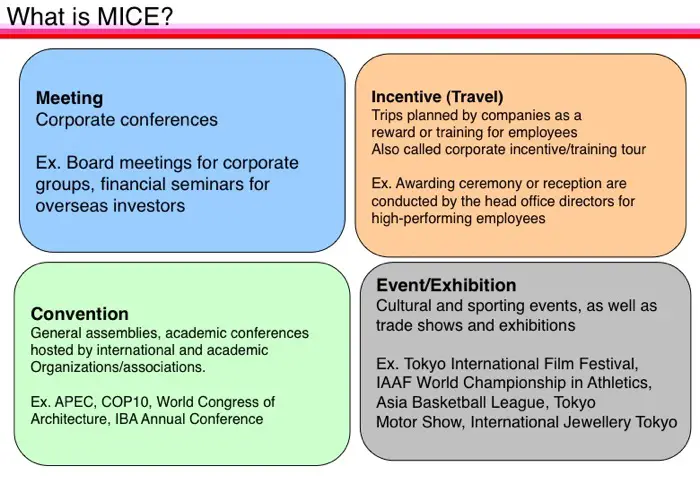Ways to Promote
Tourism Business

In 2017, the world travel and tourism industry contributed more than $10 trillion dollars to the global economy. Of this amount, business tourism contributed a significant proportion, with a total of $1.23 trillion dollars.
Modern society transportation and infrastructure systems continue to revolutionise and therefore business tourism has the means to provide greater economic power than it has previously.
In this post, I will focus on the growing tourism industry of ‘business tourism’. I will explain what business tourism is, why business tourism is part of the tourism industry and provide a few examples of where business tourism takes place. Business tourism, or business travel, is essentially a form of travel which involves undertaking business activities that are based away from home.
The United Nations World Tourism Organization (UNWTO) defines tourists as people ‘traveling to and staying in places outside their usual environment for not more than one consecutive year for leisure, business and other purposes’, thus making business an important and integral sector of the tourism economy.


MICE
Meetings
Convention
A convention, in the sense of a meeting, is a gathering of individuals who meet at an arranged place and time in order to discuss or engage in some common interest. The most common conventions are based upon industry, profession, and fandom. Trade conventions typically focus on a particular industry or industry segment, and feature keynote speakers, vendor displays, and other information and activities of interest to the event organizers and attendees. Professional conventions focus on issues of concern along with advancements related to the profession. Such conventions are generally organized by societies or communities dedicated to promotion of the topic of interest. Fan conventions usually feature displays, shows, and sales based on pop culture and guest celebrities.
Exhibhitions
A trade fair (trade show, trade exhibition, trade exposition, or expo) is an exhibition organized so that companies in a specific industry can showcase and demonstrate their latest products and services, meet with industry partners and customers, study activities of rivals, and examine recent market trends and opportunities. In contrast to consumer fairs, only some trade fairs are open to the public, while others can only be attended by company representatives (members of the trade, e.g. professionals) and members of the press, therefore trade shows are classified as either "public" or "trade only".










